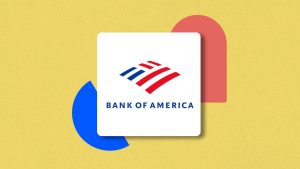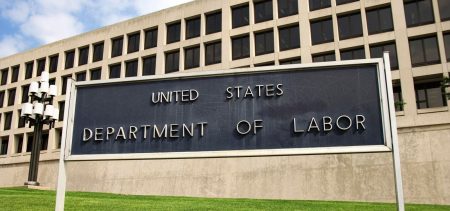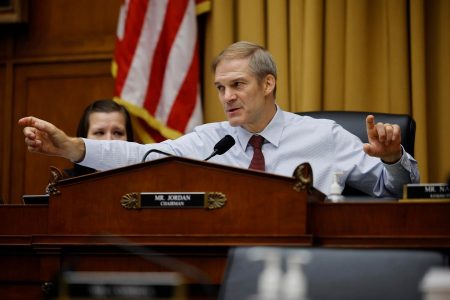Millions of borrowers are potentially at risk of having their student loan payments increase after a group of Republican-led states filed a legal challenge against the Biden administration last week.
The lawsuit, led by Kansas Attorney General Kris Kobach, seeks to overturn President Joe Biden’s new SAVE plan. SAVE is an income-driven repayment plan that ties a borrower’s monthly payments to their income and family size, with the possibility of student loan forgiveness after 2o or 25 years in repayment (or sooner than that in some cases for borrowers with low initial balances).
While the challenge’s focus is seemingly on the student loan forgiveness component of the new SAVE plan, the lawsuit is seeking to block the entire SAVE program. According to the Biden administraiton, least 7.5 million borrowers have already enrolled in SAVE, which has lower monthly payments than other IDR plans such as Income-Based Repayment or Pay-As-You-Earn. If a federal court sides with the challengers, the entire SAVE plan could be at risk. And depending on what a court orders, borrowers could see their monthly payments increase if there is an adverse ruling.
Here are four potential scenarios.
Challenge To SAVE’s Repayment And Student Loan Forgiveness Benefits Could Fail
The challengers have likened Biden’s new SAVE plan to his administration’s first attempt to enact widespread student loan forgiveness. That initiative, which would have forgiven $10,000 in federal student loans for millions of borrowers, was overturned by the Supreme Court last summer. Many of the same Republican-led states that participated in that challenge have signed onto the latest lawsuit.
“A coalition of States sues Defendant Biden, as well as co-defendants the Department of Education and Secretary of Education Miguel Cardona, to stop a second attempt to avoid Congress and pass an illegal student debt forgiveness,” reads the introductory statement in the Complaint, which was filed in U.S. District Court in Kansas. But the SAVE plan and Biden’s first student loan forgiveness program are very different programs, enacted under distinct laws.
Biden’s one-time debt relief plan he unveiled in 2021 was established under the HEROES Act, a 2003 law that allow the Department of Education to broadly “waive” federal regulations pertaining to student debt and financial aid programs in response to a national emergency. In a 6-3 ruling, the Supreme Court’s conservative majority concluded that Congress did not intend the HEORES Act to authorize mass student loan forgiveness, because the statutory text did not expressly provide for that. The Court also noted the estimated $430 billion dollar price tag for the program, which triggered a high level of scrutiny.
The SAVE plan, however, has nothing to do with the HEROES Act. The Biden administration created the SAVE plan under provisions of the Higher Education Act, which gives the Department of Education wide latitude to draft regulations governing income-driven repayment plans. The Biden administration will likely argue that it followed regular administrative procedure rules in establishing the new SAVE plan, just like prior administrations did to create the Income-Contingent Repayment plan in 1994, the Pay As You Earn plan in 2012, and the Revised Pay As You Earn plan in 2015 — all authorized under the HEA. Many legal observers generally agree that the SAVE plan is on stronger legal footing than Biden’s initial debt relief program.
There also could be questions about the states’ standing to sue. To be able to prevail in federal court, a petitioner must be able to show a relationship between a challenged policy and a concrete injury. An injury cannot be speculative or too tenuous. In the HEROES Act challenge, the Supreme Court found that the states suing the Biden administration had standing because loan forgiveness would deprive a state-related loan servicer — MOHELA — of revenues. In the latest challenge, the states argue that the generous features of SAVE will harm the states’ abilities to recruit and retain talent because borrowers are less likely to need access to other student loan forgiveness programs, like PSLF. This argument may be more tenuous (and far more speculative) than arguments made in the prior challenge, and the Biden administration may be able to demonstrate that the opposite is true — borrowers are more likely to go into low-paying state jobs if they are able to better afford their student loan payments.
If Challenge Succeeds, Court Could Limit Injunction To Early Student Loan Forgiveness
If a federal judge finds that the states do have standing to sue the Biden administration, there is a greater risk that the SAVE regulations could ultimately get blocked in some manner. But then the question becomes what that actually looks like for borrowers.
One possibility is a limited ruling that only blocks so-called “early” student loan forgiveness under SAVE. All IDR plans allow for student loan forgiveness after 20 or 25 years in repayment. But SAVE allows for student loan forgiveness in as little as 10 years for borrowers who took out $12,000 or less in loans. While federal law only indicates that IDR plans cannot have a repayment term that exceeds 25 years, the states argue that, “Under the guise of modifying the terms of loan repayment, the Final Rule will in fact forgive billions of dollars in student debt,” which (they argue) is not what Congress contemplated when it authorized the creation of IDR plans.
It is conceivable that a Court could partially block the SAVE regulations, applying an injunction only to student loan forgiveness on an accelerated term. However, that is not what the GOP-led states are asking for, so this may not be the most likely outcome.
Court Could Block SAVE’s Repayment And Student Loan Forgiveness Benefits For Just New Enrollees
If a court is going to side with the GOP challengers, it’s probably more likely that it would block all of the SAVE regulations, not just some of them (i.e., the portion allowing for early student loan forgiveness).
But there is a possibility that a court could block only new enrollment in SAVE. The Education Department could argue that borrowers who already have signed up for SAVE and are making payments should not be kicked out of the plan. And there may be contactual, equitable, or detrimental reliance arguments that could support the department’s legal position.
If this were to happen, there could be an odd situation where millions of borrowers are enrolled in a blocked repayment plan that no one else can access.
Court Could Overturn SAVE For Everyone, Resulting In Higher Student Loan Payments
Another possibility is that, in siding with the Republican-led states, a federal court could overturn the SAVE plan for everyone. The exact impacts of this potential outcome are not entirely clear. But if the SAVE regulations get overturned, the most likely scenario is that the regulations that were previously in place would go back into effect.
That means that borrowers enrolled in SAVE could revert to the Revised Pay As You Earn, or REPAYE, plan. SAVE effectively replaced REPAYE, and borrowers who were in REPAYE before were automatically enrolled in SAVE when that new program was unveiled last fall.
Under nearly every scenario, borrowers now in SAVE would have higher payments under REPAYE. That’s because SAVE has a more affordable repayment formula and a more generous income exemption. A single borrower earning $60,000 annually would see a monthly payment increase of around $90. Borrowers with only undergraduate student loans could see an increase of close to $200 (factoring in SAVE’s reduced payment formula for undergraduate borrowers set to go into effect this summer).
Married borrowers could see an even bigger increase in monthly payments. That’s because the REPAYE plan factors in spousal income regardless of a borrower’s marital tax filing status. SAVE, like other IDR plans, only factors in spousal income if the borrower files taxes as married-filing-jointly.
Overturning SAVE would also eliminate an important interest subsidy, which waives 100% of any interest accrual that exceeds a borrower’s monthly payment. This is designed to halt any future balance increases associated with negative amortization. Under REPAYE, only 50% of excess interest is waved.
Read the full article here










